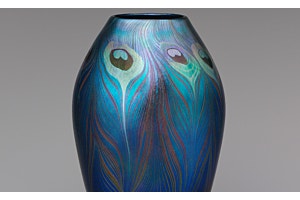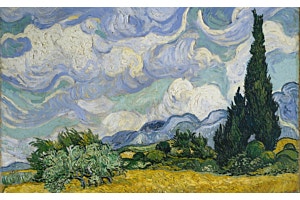
Édouard Manet (French, 1832–1883) and Edgar Degas (French, 1834–1917) are perennial favorites at The Met as well as The Met Store, and we’re delighted to present new designs in celebration of the Museum’s landmark exhibition Manet/Degas.
On view at The Met Fifth Avenue through January 7, 2024, Manet/Degas examines the close albeit tumultuous relationship between these two highly influential artists. Manet and Degas were friends, rivals, and, at times, antagonists who worked to define modern painting in 19th-century France. By surveying their careers in parallel and showcasing their work side by side, this can’t-miss show explores one of the most significant artistic dialogues in modern art history.
Shop our latest Manet- and Degas-inspired items below and at The Met’s Fifth Avenue store.
Manet/Degas
By Stephan Wolohojian, John Pope-Hennessy Curator in Charge in The Met’s Department of European Paintings, and Ashley Dunn, associate curator in The Met’s Department of Drawings and Prints, with contributions by Stéphane Guégan, Denise Murrell, Haley S. Pierce, Isolde Pludermacher, and Samuel Rodary.


This lavishly illustrated, in-depth book offers an opportunity to reevaluate some of the most canonical French artworks of the 19th century, including Manet's Olympia (1863), Degas's The Absinthe Drinker (1875–76), and other masterworks.
Enlivened by archival correspondence and records of firsthand accounts, essays by American and French scholars take a fresh look at the artists’ family relationships, literary friendships, and interconnected social and intellectual circles in Paris; explore their complex depictions of race and class; discuss their political views in the context of wars in France and the United States; compare their artistic practices; and examine how Degas built his personal collection of works by Manet after his friend's premature death. An illustrated biographical chronology likewise charts their intersecting lives and careers.


Degas Impressions Double-Sided Square Silk Scarf
This striking double-sided scarf reproduces two vibrant oil paintings by Degas in The Met collection.


A Woman Seated beside a Vase of Flowers (1865) depicts a lady—probably the wife of Degas's childhood friend Paul Valpinçon—lost in thought beside a bursting bouquet. The unusual composition exemplifies the artist's endeavor to capture his subjects in fleeting, slice-of-life moments.


The reverse side of the scarf features one of Degas's favorite subjects. The Dance Class (1874) pictures ballerinas and their mothers waiting as a dancer executes an attitude for her examination by the ballet master Jules Perrot.


Degas Impressions Double-Sided Puzzle
Despite his indelible association with the Impressionists as a founder and member of the group, Degas never quite reconciled with the label, rather considering himself a “Realist” or an “Independent.” While his peers enthusiastically painted plein-air landscapes, Degas preferred scenes in theaters and cafes, pursuing the challenge of capturing artificially lit spaces in keeping with his academic training. Assemble two of the artist's interior masterpieces in The Met collection—A Woman Seated beside a Vase of Flowers (1865) and The Dance Class (1874)—with this double-sided 1,000-piece puzzle.


Degas Dancers Silk Neckerchief
Lend an artful touch to any look with our stylish silk neckerchief featuring Degas's Dancers, Pink and Green (ca. 1890).


This vivid oil painting in The Met collection affords a privileged view of dancers waiting in the wings of the famed Paris Opéra during a performance. The painting's heavily impastoed surface suggests that Degas worked directly and extensively on this picture; the artist created an opaque quality by mixing his colors with white and applying the pigments in multiple thick layers, recalling the pastel technique that he perfected in the previous decade.


Degas Dance Class Tote and Zip Pouch
This iconic composition, a detail of which is reproduced on our 100% cotton canvas tote and zip pouch, pictures some 24 figures in the ballet studio.


Degas prepared for this ambitious painting with countless drawings made in his own studio while dancers posed for him.


Manet Boating Zip Pouch
The leisurely scene featured on this 100% cotton zip pouch was painted by Manet in 1874.


Manet summered at Gennevilliers that year, and spent time with Claude Monet and Auguste Renoir across the Seine at Argenteuil where the Museum's Boating was painted. Manet adopted the lighter touch and palette of his Impressionist peers, and notably employed the broad planes of color and strong diagonals of Japanese prints. When Boating was exhibited at the Salon of 1879, it was declared "the last word in painting" by Mary Cassatt, who recommended the acquisition to the New York collectors Louisine and H. O. Havemeyer.


What the Artist Saw: Edgar Degas
This charming illustrated series considers what inspired famous artists, and encourages creativity through guided art-making projects. In What the Artist Saw: Edgar Degas, young readers are introduced to the French artist who so skillfully recorded his impressions of modern life. From dancers in the studio and on stage to scenes in shops and cafes, Degas was a wonderfully experimental artist who captured fleeting moments of life in a bygone era.


Shop our full collection of accessories, home decor, stationery, and more inspired by Manet and Degas in-store and online.






